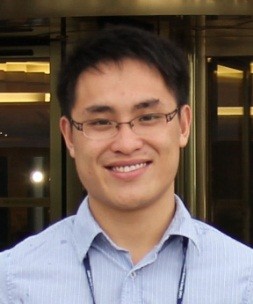


Biography: Dr. Gongping Liu is an associate professor in Chemical Engineering at Nanjing Tech University since 2016. After receiving his PhD under the supervision of Professor Wanqin Jin from Nanjing University of Technology in 2013, he joined Nanjing Tech University as an assistant professor. He has been a postdoctoral fellow in Dr. William Koros lab at Georgia Institute of Technology (03/2015~03/2017). His current research focuses on rational designing and engineering of advanced membranes mainly derived from inorganic-polymer composite materials (e.g., MOFs-, zeolite- and silica- filled mixed matrix membranes), two-dimensional materials (e.g., graphene) and asymmetric hollow fibers, which are applied for energy and environment based on molecular separations including CO2 removal/capture, organic compounds recovery and purification, and membrane-intensified processes. Dr. Liu had more than 40 journal papers with over 1000 citations and H-index 18 (Google Scholar), and 10 presentations in international conferences and 8 granted patents.
Speech Title: Organic-inorganic Composite Materials for Membrane Separation
Abstract: During the past decades, membrane separation technology has been widely used in various applications, such as water treatment, food industry, chemical process, biochemical engineering, etc. The key point of membrane technology is developing membrane materials with high permeate flux and selectivity, as well as essential stability. According to the material property, there are three main kinds of membranes for molecular separation: organic (polymeric) membranes, inorganic membranes and organic-inorganic composite membranes. Nowadays, polymeric membranes still dominate because of the advantages in low-cost and easy-fabrication. Inorganic membranes exhibit much higher performance than polymeric membranes; however, their practical applications are limited by the scalable and cost-effective production. Alternatively, the organic-inorganic composite membranes are consisted of organic separation layer supported by inorganic substrate, or polymeric matrix filled by inorganic particles. By combining the advantages of organic and inorganic materials, they provide an effective approach to improve the performance of polymeric membranes. In this talk, recent advances in organic-inorganic composite membranes for molecular separation will be reviewed by focusing on the structural design, fabrication approach and separation application. Some of our attempts will be discussed to illustrate the key issues for developing of this kind of membranes. The challenges and future directions will be outlook in this emerging field.